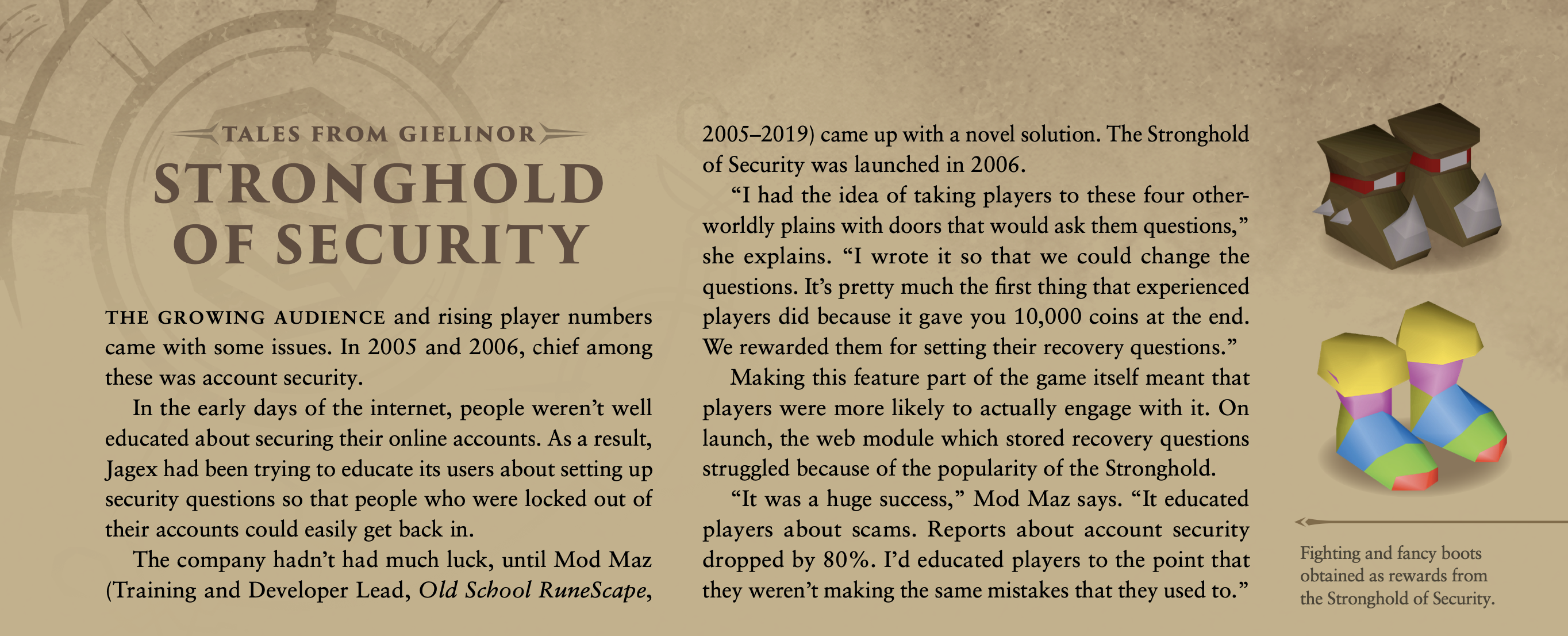Book Notes: Runescape 20 years
Table of Contents
- For some inexplicable reason, the hardware died at just over half capacity. We had around 1,200 or 1,300 players,The server was only about 60% full but it crashed. We reset it and started again. Every time we hit around 1,300 users, the server died and we couldn’t work out why. We ended up capping that one at 1,200 people and bought a second server. Years later, they found the root of the problem. Staff at the hosting facility found melted plastic all over the blade server motherboards. When the server was originally assembled, whoever built it forgot to take the plastic cover off the CPU heat sink, so it wasn’t properly connected. That’s why it was overheating and crashing. We spent hours trying to find the problem on our end. We ruled out a hardware fault because we eventually had three of these servers and they all had the same problem. We figured that it had to be a software problem. It turns out that every single one of these servers had been assembled in the same way.
- “10% of our players were just logging in to chat,” Mod Fetzki (Christoph Vietzke, Head of RuneScape, Jagex, 2005–2012) says. “They wouldn’t even load the game. They’d just sit in the lobby and chat.”
- With the move to RuneScape 2, new hires to the Content Development teams were often given their own area of map to develop. In part, this was because Jagex didn’t have version control until much later down the line. As a result, everyone was making additions and changes to one version of RuneScape. Having developers spread out across the map prevented people from stepping on each other’s toes.
- The Sandwich Lady was based on a ‘slightly aggressive’ woman who came to Jagex’s St John’s Innovation Centre office23 and often interrupted work. “She would come around shouting ‘Sandwiches!’ as she pushed her trolley through the office,” Mod Ash remembers. “We couldn’t do a trolley in the game for graphical reasons, so we gave her a tray instead. “Sandwiches, I made these for you’ was iconic as a reference to that old lady and her trolley back in St John’s.”

- Of course, the Wilderness wasn’t gone for good. Jagex realized that something had been lost by cutting this part of the world from RuneScape, namely the chaotic and exciting gameplay that it enabled. Alternatives like Clan Wars and Bounty Hunter worlds were popular, but didn’t capture the feeling that the Wilderness had. There wasn’t an organized fan campaign for the area’s return but it was a popular sentiment.
“I remember at the first RuneFest someone asked about the Wilderness coming back during one of the panels. There was a breakout of applause and support,” Mod Mac (Neil McClarty, VP of Product and Player Strategy, Jagex, 2008–present) says.
“The group wasn’t huge but it just gave an indication that there was something in the idea.” - We’d learnt a lot from the removal of the Wilderness and free trading. If players don’t understand why you’re doing something, they will never latch onto the solutions
- Around this time, Jagex hired a data analyst to help the company better understand RuneScape. They wrote a system that could record everything that was done in-game, but after 10 minutes they had to turn it off because they’d already gathered 2TB of data
Title: RuneScape: The First 20 Years - An Illustrated History Author: Alex Calvin ISBN10: 0744029993 ISBN13: 9780744029996